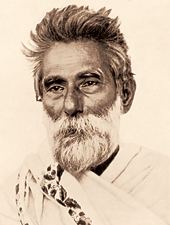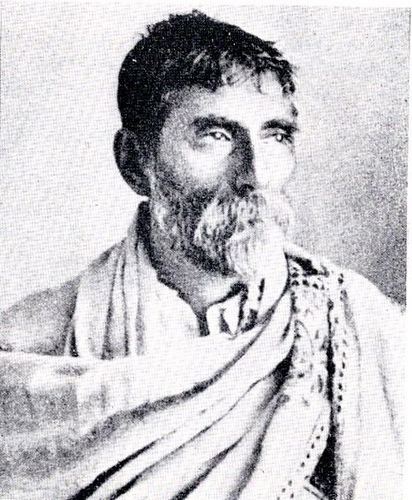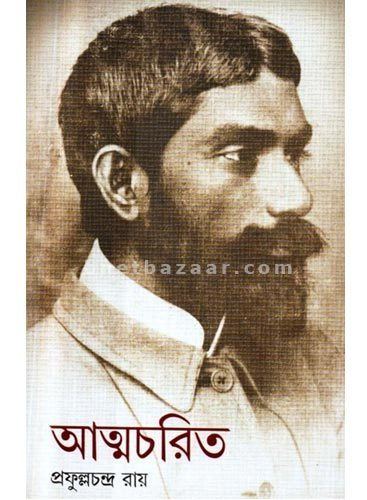Nationality Indian Parents Harish Chandra Ray Died June 16, 1944, Kolkata | Name Prafulla Ray | |
 | ||
Alma mater Metropolitan InstitutionPresidency CollegeUniversity of CalcuttaEdinburgh University Books Acharya (Sir, Dr) P. C. Ray's Three Convocation Addresses: National Muslim University of Aligarh, University of Mysore, Banaras Hindu University Organizations founded Bengal Chemicals and Pharmaceuticals Similar People Jagadish Chandra Bose, Meghnad Saha, Prasanta Chandra Mahalanobis, Satyendra Nath Bose, Salim Ali | ||
Prafulla chandra ray
Acharya Sir Prafulla Chandra Ray also spelled Prafulla Chandra Rây (Bengali: প্রফুল্ল চন্দ্র রায় Praphulla Chandra Rāy; 2 August 1861 – 16 June 1944) was a Bengali chemist, educator and entrepreneur.
Contents
- Prafulla chandra ray
- Acharya prafulla chandra ray life and science of a legend
- Early life
- Career
- Literary works and interests
- Social service
- Recognition
- Personal life
- Legacy
- References

The Royal Society of Chemistry honoured his life and work with the first ever Chemical Landmark Plaque outside Europe. He was the founder of Bengal Chemicals & Pharmaceuticals, India's first pharmaceutical company. He is the author of A History of Hindu Chemistry from the Earliest Times to the Middle of Sixteenth Century (1902).

Acharya prafulla chandra ray life and science of a legend
Early life
Ray was born in Raruli-Katipara, a village in the Khulna District of present-day Bangladesh. His father Harish Chandra Ray was a land proprietor. Up to the age of nine, Prafulla Chandra studied in a school in his village. In 1870 his family migrated to Calcutta and Ray and his elder brother were admitted to Hare School. In 1874, while Ray was in the fourth standard, he suffered from a severe attack of dysentery, which hampered his health throughout his life. Due to the severity of the attack, Ray had to postpone his studies for a couple of years and return to his ancestral home in the village. However Ray himself considered this disruption in his studies as a blessing in disguise as it allowed him to read much more widely than what would have been possible within the constraints of school curricula. Amongst others, he read Lethbridge's 'Selections from Modern English Literature' and Goldsmith's Vicar of Wakefield. After recovering from his illness, Ray returned to Calcutta and took admission in Albert School.
In 1879 he passed the Entrance Examination and took admission into the Metropolitan Institution (later Vidyasagar College) which was established by Pandit Ishwar Chandra Vidyasagar. At that time the Metropolitan Institution had no science classes or laboratories and Ray attended lectures on physics and chemistry in the Presidency College as an external student. Here he was specially attracted by the chemistry courses of professor Alexander Pedler. While studying for his BA examination, he applied for and was awarded in 1882 one of the two Gilchrist Prize Scholarships after an all-India competitive examination. Without completing the course for his degree, Prafulla Chandra proceeded to Britain and enrolled in the BSc programme of Edinburgh University where he studied physics, chemistry and biology amongst other subjects. But Ray did not confine his studies to only natural sciences. He also developed a strong interest in history and read books like Rousselet's L'Inde des Rajas, Lanoye's L'Inde contemporaine, Revue dex deux moneds. He also read Fawcett's book on political economy and Essays on Indian Finance. After obtaining his BSc degree from Edinburgh University, Ray embarked on his doctoral Thesis (DSc) in the same university and completed his doctorate in 1887. He was awarded the Hope Prize which allowed him to work on his research for a further period of one year after completion of his doctorate. His thesis title was "Conjugated Sulphates of the Copper-magnesium Group: A Study of Isomorphous Mixtures and Molecular Combinations". While a student he was elected Vice-President of Edinburgh University Chemical Society in 1888.
Career
Prafulla Chandra returned to India in the first week of August 1888 and subsequently joined Presidency College, Calcutta as temporary Assistant Professor of Chemistry in 1889. Ray who had a doctorate in science from Edinburgh University felt deeply aggrieved when even with his excellent educational credentials he was not able to secure a position within the Imperial service (his academic position was within the 'provincial service') and attributed this to the discriminatory attitude of the ruling government towards native intelligentsia. He complained to the top officials of the government but with no effect.
In 1896, he published a paper on preparation of a new stable chemical compound: mercurous nitrite. This work made way for a large number of investigative papers on nitrites and hyponitrites of different metals, and on nitrites of ammonia and organic amines. He started a new Indian School of Chemistry in 1924.
Prafulla Chandra retired from the Presidency College in 1916, and joined the Calcutta University College of Science (also known as Rajabazar Science College) as its first "Palit Professor of Chemistry", a chair named after Taraknath Palit. Here also he got a dedicated team and he started working on compounds of gold, platinum, iridium etc. with mercaptyl radicals and organic sulphides. A number of papers were published on this work in the Journal of the Indian Chemical Society.
In 1936, at the age of 75, he retired from active service and became Professor Emeritus. Long before that, on the completion of his 60th year in 1921, he made a free gift of his entire salary to the Calcutta University from that date onward, to be spent for the furtherance of chemical research, and the development of the Department of Chemistry in the University College of Science.
He had written 107 papers in all branches of Chemistry by 1920.
Literary works and interests
He contributed articles in Bengali to many monthly magazines, particularly on scientific topics. He published the first volume of his autobiography Life and Experience of a Bengali Chemist in 1932, and dedicated it to the youth of India. The second volume of this work was issued in 1935.
In 1902, he published the first volume of A History of Hindu Chemistry from the Earliest Times to the Middle of Sixteenth Century. The second volume was published in 1909. The work was result of many years' search through ancient Sanskrit manuscripts and through works of orientalists.
Social service
In 1923, Northern Bengal suffered a flood which made millions of people homeless and hungry. Prafulla Chandra organised Bengal Relief Committee, which collected nearly 2.5 million rupees in cash and kind and distributed it in the affected area in an organised manner.
He donated money regularly towards welfare of Sadharan Brahmo Samaj, Brahmo Girls' School and Indian Chemical Society. In 1922, he donated money to establish Nagarjuna Prize to be awarded for the best work in chemistry. In 1937, another award, named after Ashutosh Mukherjee, to be awarded for the best work in zoology or botany, was established from his donation.
Recognition
He earned his D.Sc. at Edinburgh University in 1887. In 1908 the University of Calcutta awarded him an honorary Doctor of Philosophy degree. He received an honorary D.Sc. degree from Durham University in 1912, and another from Dacca University (now Dhaka University) in 1936. He was made a Companion of the Order of the Indian Empire in 1911. He was an honorary fellow of the Chemical Society and Deutsche Akademie, Munich. He was awarded a knighthood in 1917. He was president of the 1920 session of the Indian Science Congress. The Royal Society of Chemistry (RSC) honoured his life and work with the first ever Chemical Landmark Plaque outside Europe.
Personal life
He remained a bachelor throughout his life who took active participation in politics. His family, in particular, his father Harish Chandra Ray, was strongly associated with Brahmo Samaj. Prafulla Chandra developed direct connections with the Samaj as he grew up; he used to attend Sunday evening sermons of Keshub Chandra Sen and was deeply influenced by Sen's Sulabha Samachar. Later he was closely associated with Sadharan Brahmo Samaj and occupied various administrative posts during his lifetime and finally elected as the President and Trustee of Sadharan Brahmo Samaj. He was elected solely on the basis of his potential, and not because of his father's influence in the Bramho Samaj.
Legacy
Acharya Prafulla Chandra College, Prafulla Chandra College, Acharya Prafulla Chandra High School For Boys, and Acharya Prafulla Chandra Ray Polytechnic in Kolkata commemorate his name, as does the Government P. C. College in Bagerhat, Khulna Division, Bangladesh, and the Ray–Dutt twist.
